Oven cleaner to the rescue.
Very occasionally I write about cooking tools in this journal. For an index of cooking articles on this blog click here.
Almost 12 years ago I wrote about the Sabatier non-stainless chef’s knife, and it remains as perfect as the day I bought it. Sadly, it seems that non-stainless knives are no longer available. Shame, they present the best possible cutting edge to your food, in exchange for a bit of love and care.
Great cooking tools are not the sole preserve of the gourmands who make France home, and Tojiro’s bread knife remains a marvel. The price of that tool has jumped around and is back to a bargain $20 as I write. It will beat the pants off your $100 German original.
Today I’m looking at restoring the original color and finish to a Le Creuset cast iron skillet. Get the 11.75″ one – only regrets will result if you chintz on the smaller one. The downsides of this tool are its high price and high weight, along with a tendency for the gorgeous flame finish (all Le Creuset cookware should only be bought in Flame. Nothing else looks right) to discolor with use. The upsides are that this is one of the few remaining Le Creuset tools to still be made in France (hence the price) and the fact that you can put it in an oven at broiler temperature comfortable in the knowledge that no damage will result. And your grandchildren will be passing it down to the next generation.
Mine was horribly discolored after years of brutal beatings.
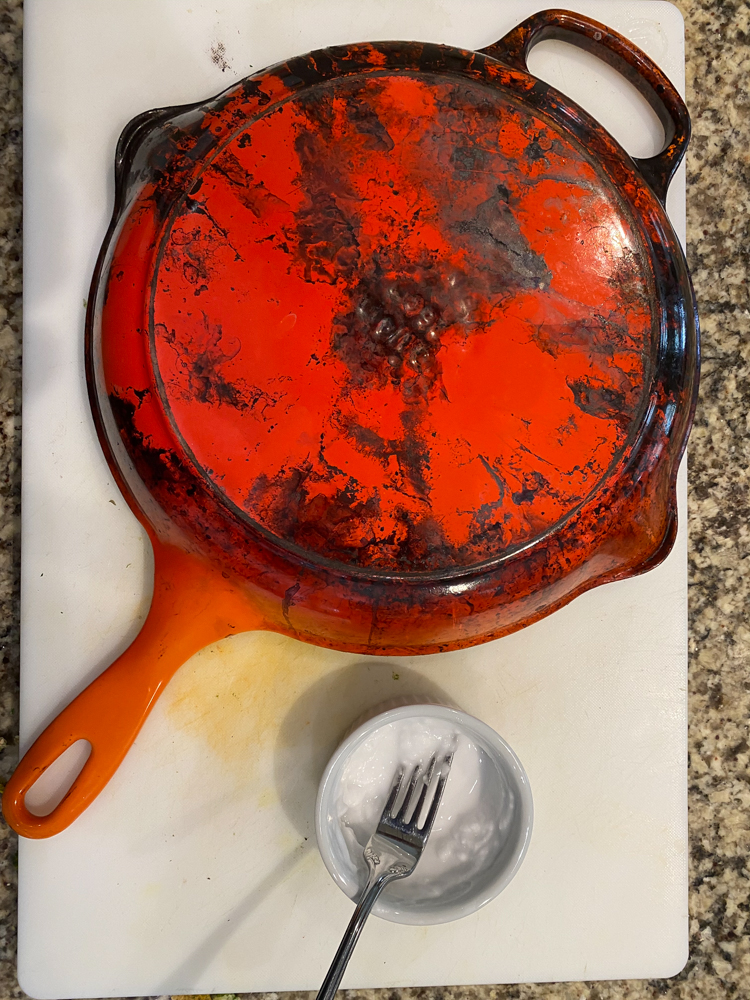
Hard, baked on deposits.
Hot soapy water? Fughedaboutit.
A baking powder and water slurry? Useless.
Bar Keeper’s Friend cleaning solution? Bad idea. Despite claims to the contrary, just try rubbing some of this product between thumb and forefinger. Yup, it’s mildly abrasive, meaning that vigorous use will destroy the gloss on your cookware’s enamel.
So the hard stuff was called for.
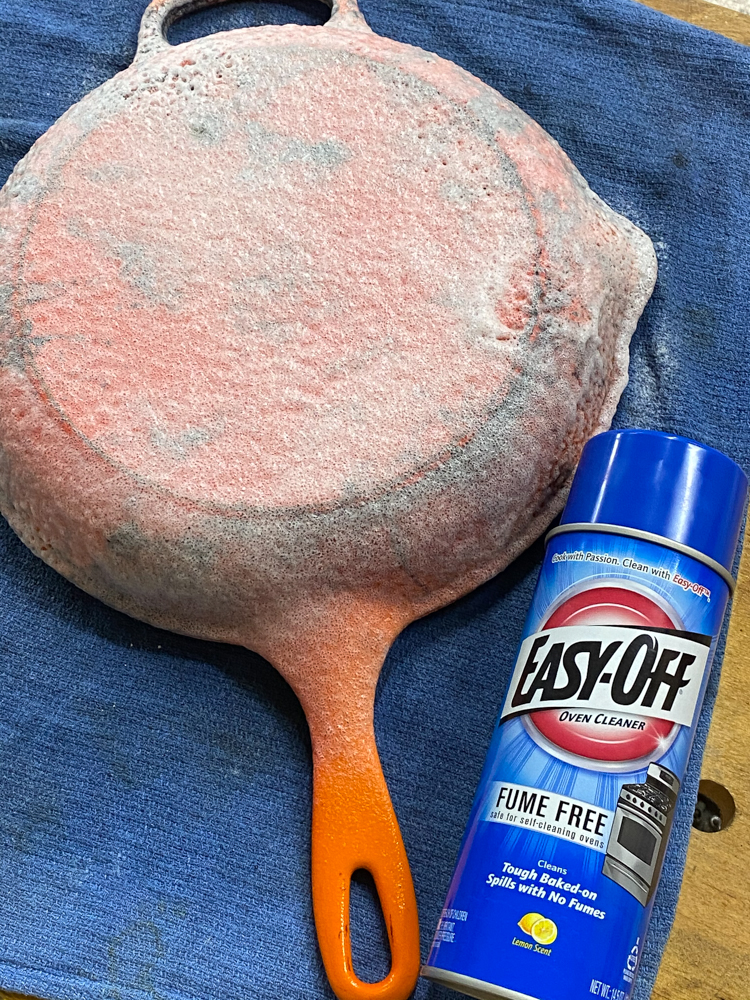
The nasty stuff.
The makers say this oven cleaner is fume free (they lie), and take it from me. You want this nowhere near your kitchen surfaces. Off to the garage and give the pan a serious spray coat. The recommended cure time is 2 hours, cold, after which my pan’s surface looked like this – rubber gloves and paper garage towels are all that’s required:
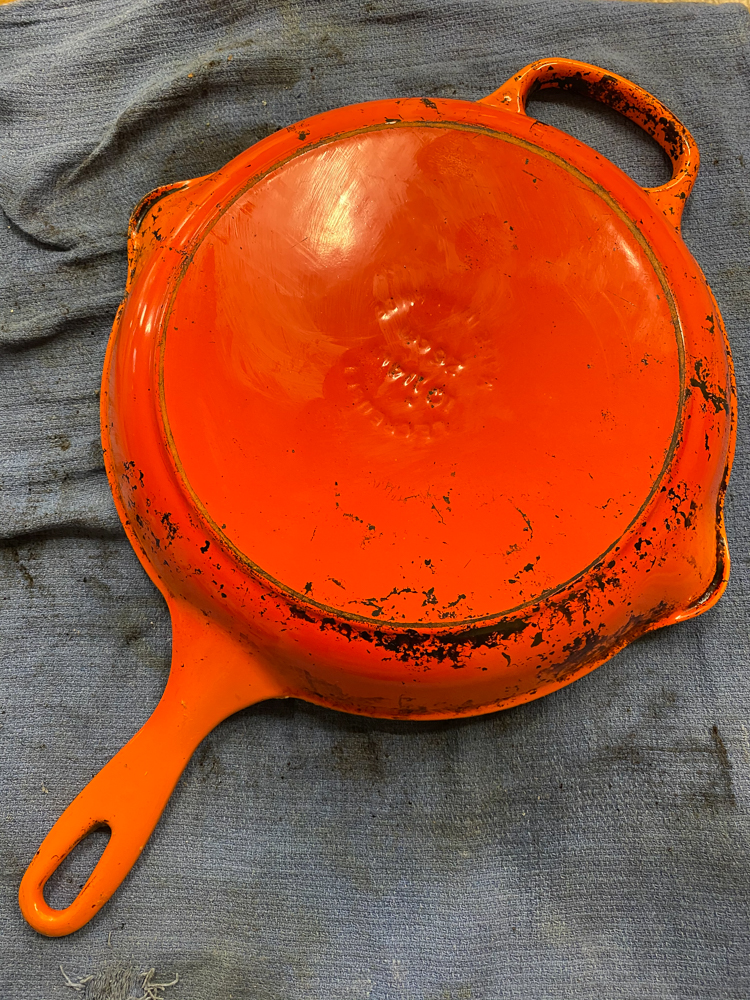
80% clean after 2 hours.
OK, do it again:
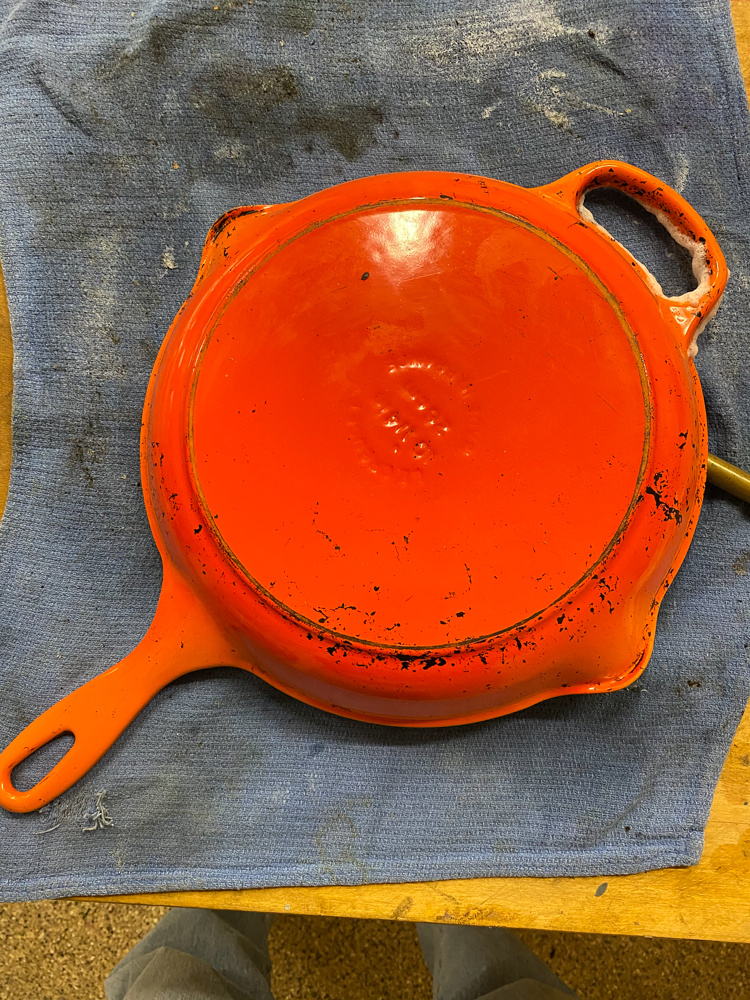
Two more hours.
Now we are at 95% clean.
So, no more Mr. Nice Guy. Another coat and leave to stew overnight:
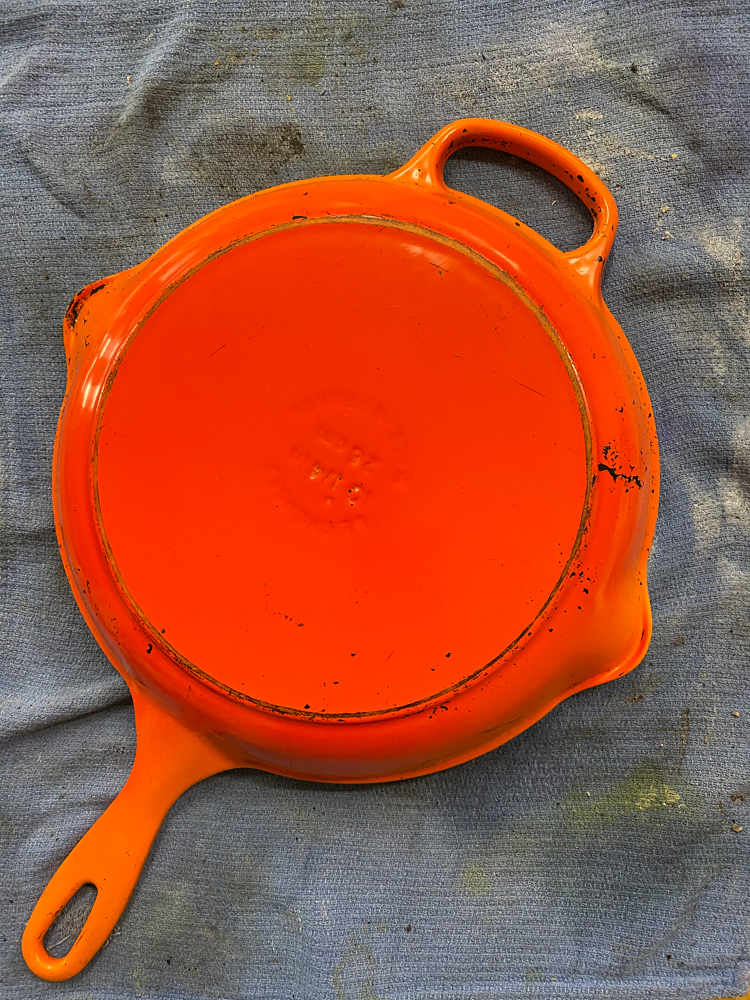
Aah!
Now we are very much in the land of diminishing returns, at 99% clean.
A thorough wash with soap and hot water is called for unless you want to grow another head and develop terminal cancer. But the gloss is there, as is the restored pride of ownership. A schmuck who uses a brassed up Nikon to broadcast his macho prowess is as bad a photographer as the lousy cook who takes no pride in the appearance of his tools is a chef.